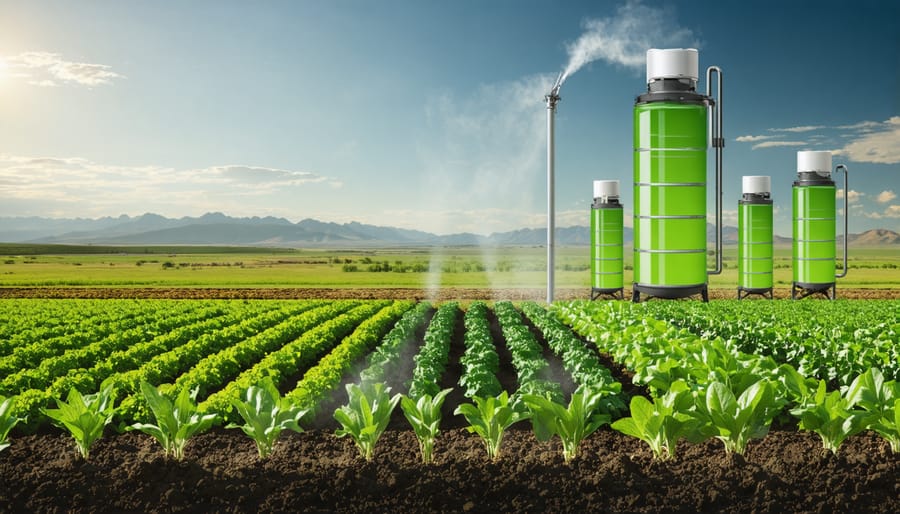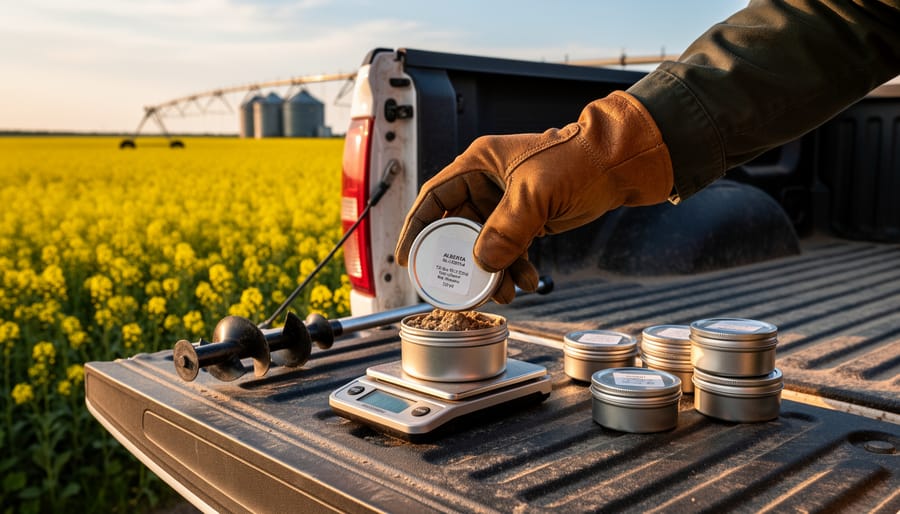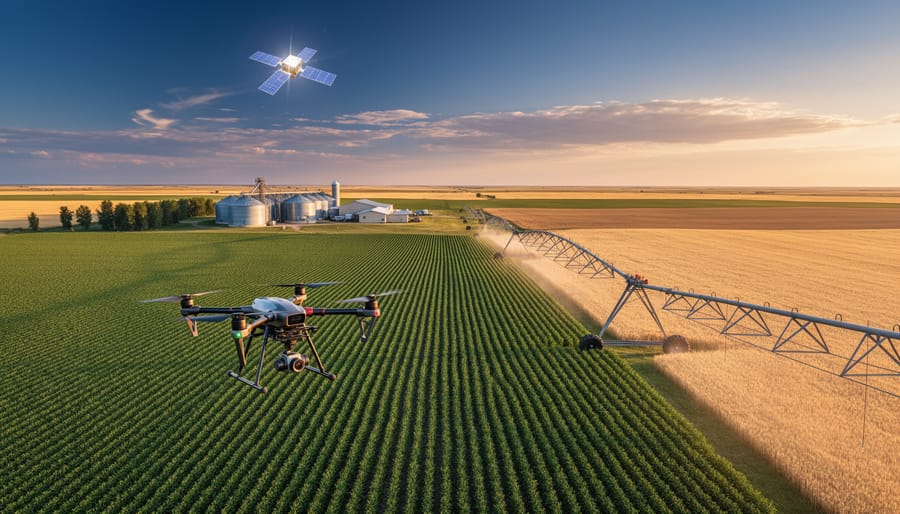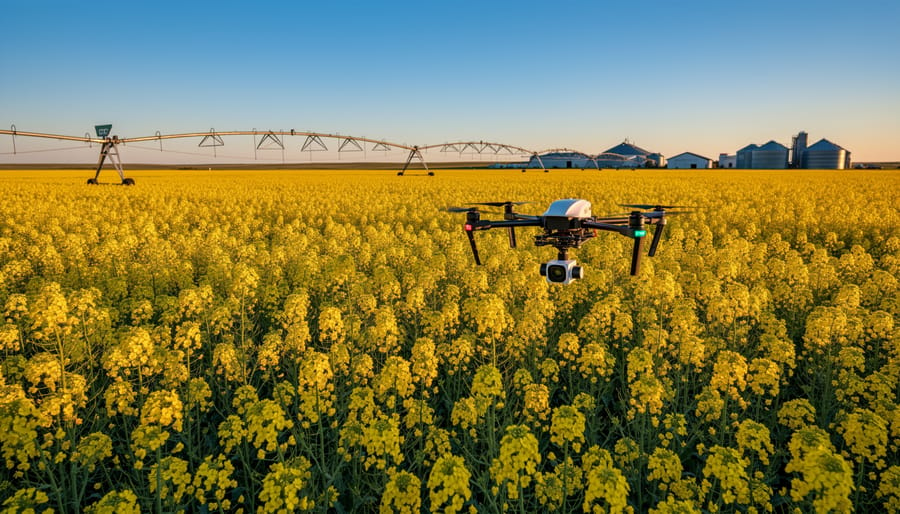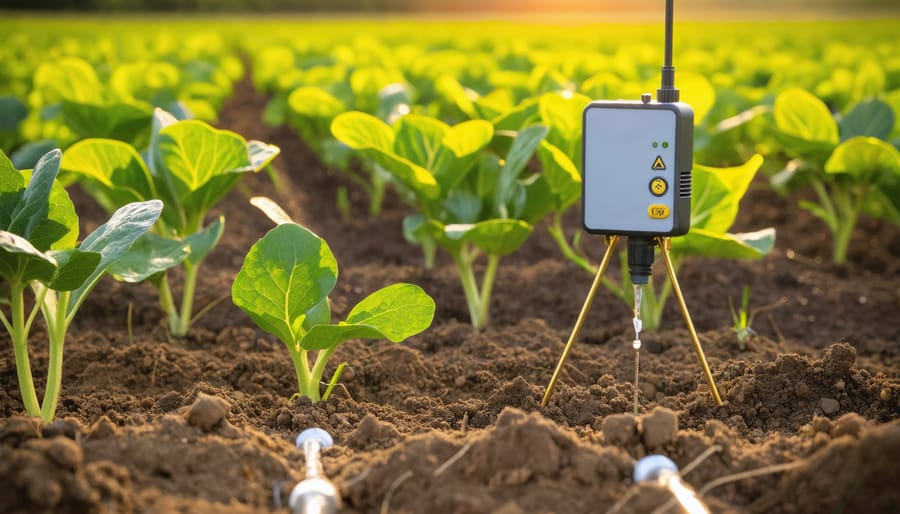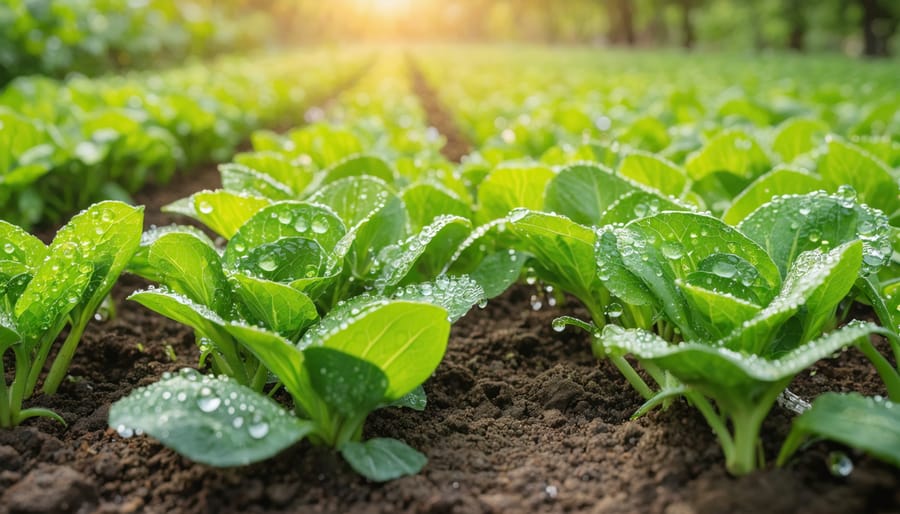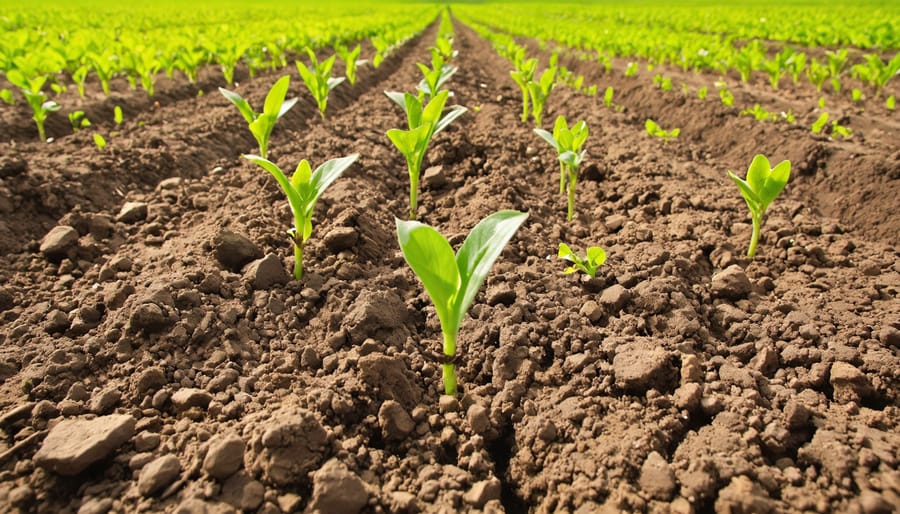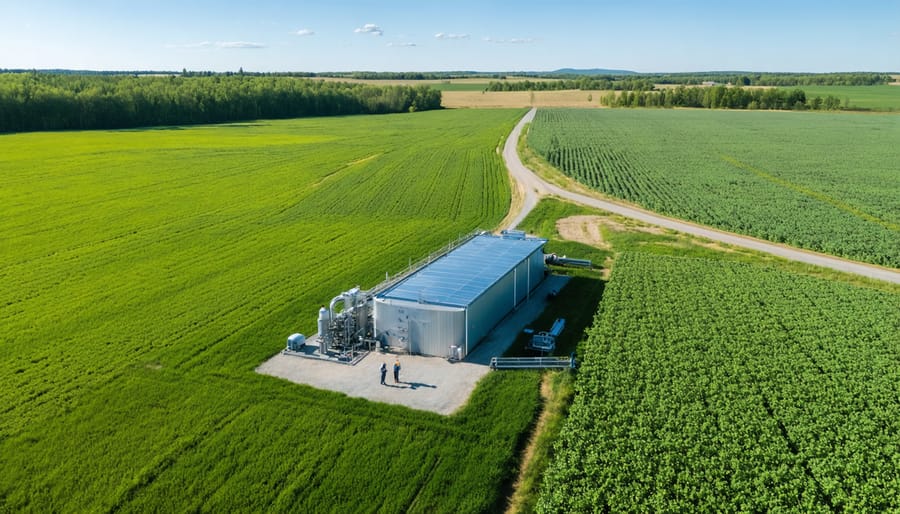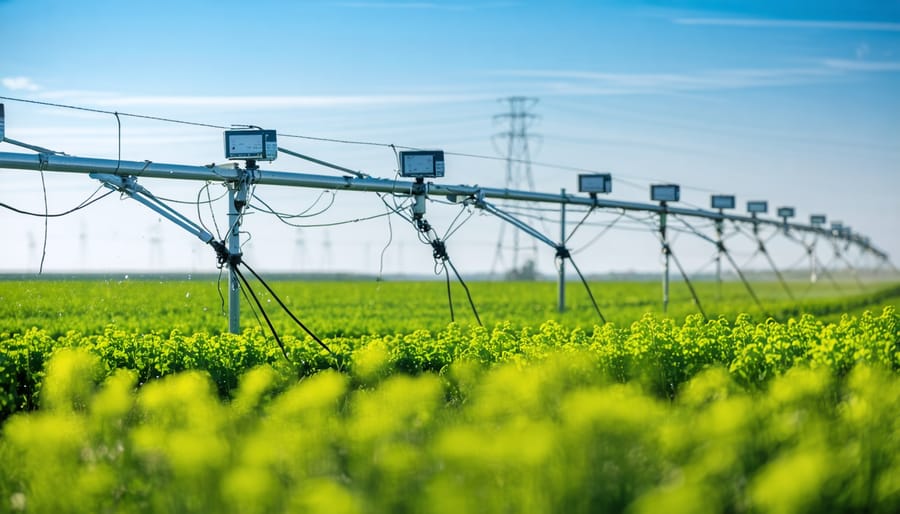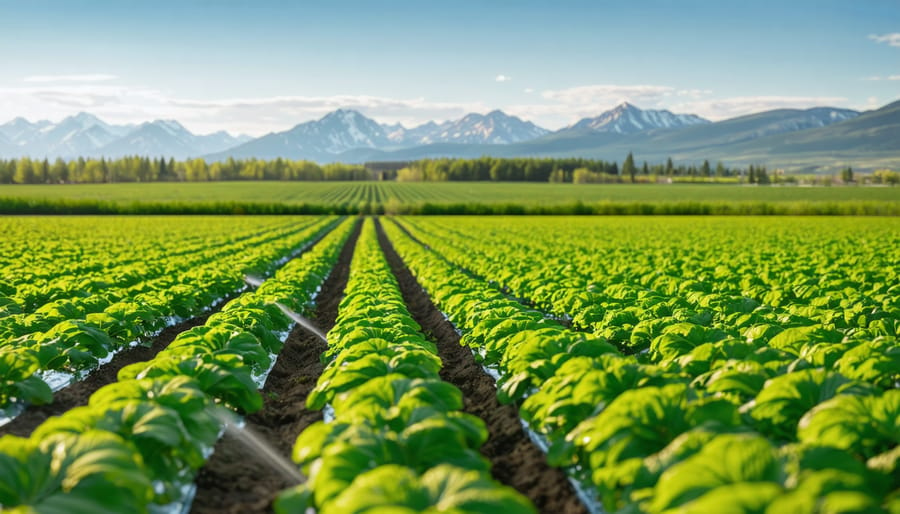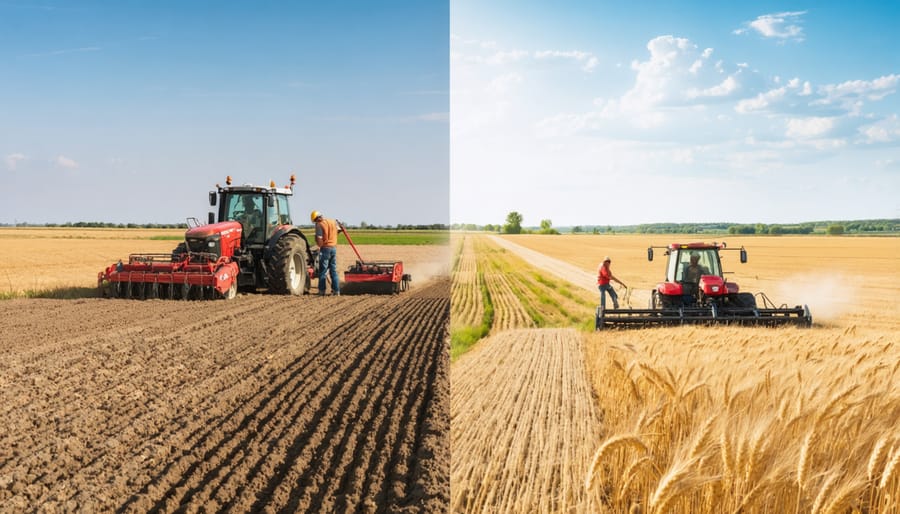Water scarcity threatens global food security, yet innovative solutions are transforming how Alberta farmers manage this precious resource. Across the province’s 50.5 million acres of agricultural land, pioneering producers are implementing sophisticated water management systems that reduce consumption by up to 40% while maintaining or improving crop yields. These practices, from precision irrigation technology to soil moisture monitoring, represent a crucial shift in Canadian agriculture’s approach to water conservation.
Through collaborative efforts between local farmers, agricultural scientists, and water management experts, Alberta has emerged as a leader in sustainable water practices. Recent studies by the University of Alberta demonstrate that farms implementing integrated water management systems see an average 30% reduction in water usage within the first growing season. These results prove particularly significant given the province’s semi-arid climate and increasing pressure on water resources.
This comprehensive guide draws from successful case studies across Southern Alberta’s irrigation districts, where farmers have revolutionized their operations through smart water management. Whether you’re managing a small-scale organic operation or a large commercial farm, these proven strategies offer practical solutions for maximizing water efficiency while ensuring profitable crop production in our unique Canadian climate.
Water Conservation Strategies That Work in Alberta
Soil Management for Better Water Retention
Effective soil management is the foundation of water conservation in organic farming. By improving soil moisture retention, Alberta farmers can significantly reduce their irrigation needs while maintaining healthy crop yields.
Adding organic matter through cover crops and crop residue management is crucial. Local farmer Sarah Thompson from Lethbridge increased her soil’s water-holding capacity by 30% by incorporating winter rye and clover into her rotation. Maintaining soil structure through minimal tillage also helps create stable channels for water movement and storage.
Implementing mulching practices can further enhance water retention. A 10-centimetre layer of straw mulch can reduce evaporation by up to 70%. Many successful farms in Southern Alberta use crop residue as natural mulch, protecting soil from moisture loss during our hot, dry summers.
Soil testing is essential for optimal management. Regular tests help monitor organic matter levels and soil structure. The ideal organic matter content for most Alberta soils is between 3-5%, though this varies by soil type and location.
Consider adding compost or well-rotted manure in spring or fall to boost organic matter content. Local studies show that increasing organic matter by just 1% can help soil hold an additional 20,000 litres of water per hectare.
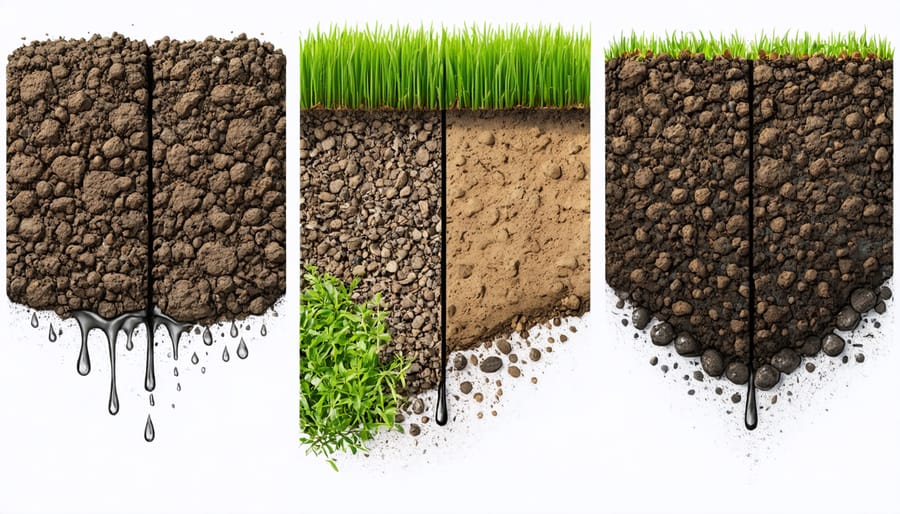
Smart Irrigation Systems for Organic Farms
For organic farms in Alberta, implementing efficient irrigation technologies requires careful consideration of both sustainability and organic certification requirements. Soil moisture sensors, weather-based controllers, and drip irrigation systems have proven particularly effective for our region’s diverse growing conditions.
Local farmer Sarah Thompson from Red Deer County successfully reduced her water usage by 40% using a combination of soil moisture probes and automated drip lines. “The key is to work with systems that respond to real-time conditions,” she explains. “Our sensors tell us exactly when and how much to water, eliminating guesswork and overwatering.”
Popular smart irrigation options for organic operations include:
– Variable rate irrigation systems that adjust water application based on soil type and crop needs
– Solar-powered moisture sensors that provide data through mobile apps
– Low-pressure drip systems that minimize water loss through evaporation
– Precision sprinklers with wind-drift reduction technology
According to the Alberta Organic Association, farms using smart irrigation systems typically see water savings of 25-35% while maintaining or improving crop yields. Many systems can be gradually implemented, allowing farmers to spread costs over several seasons while learning to optimize their use.
Remember to consult with local organic certifiers before installing new irrigation equipment to ensure compliance with organic standards. The Prairie Farm Rehabilitation Administration offers resources and occasional grants for implementing water-efficient systems.
Real Results: Case Studies from Alberta Organic Farms
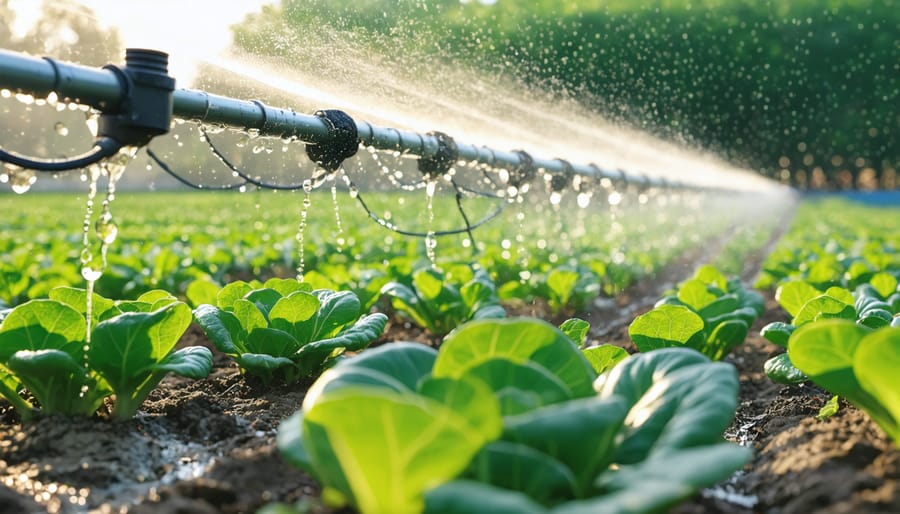
The Turner Family’s Drip Irrigation Success
Located just outside of Lethbridge, Alberta, the Turner family’s 300-hectare farm stands as a shining example of successful water conservation in agriculture. In 2019, facing increasing water costs and concerns about long-term sustainability, Mark and Sarah Turner made the bold decision to transition their entire operation to drip irrigation.
“We were using about 40% more water than we needed with our old sprinkler system,” explains Mark Turner. “The switch to drip irrigation wasn’t just about saving water – it was about securing our farm’s future for our kids.”
The Turners installed a customized drip irrigation system across their wheat and canola fields, incorporating soil moisture sensors and weather monitoring equipment. The initial investment of $175,000 was significant, but the results have been remarkable. Within the first growing season, they reduced their water consumption by 35% while maintaining crop yields.
What sets the Turners’ approach apart is their careful implementation strategy. They started with a 40-hectare pilot project, allowing them to fine-tune the system before expanding. They also worked closely with local agricultural extension services to optimize their irrigation scheduling.
“The key was monitoring and adjusting,” Sarah Turner notes. “We learned that different sections of our field needed different amounts of water. The precision of drip irrigation lets us deliver exactly what each area needs.”
Today, the Turners save approximately 115 million litres of water annually. Their success has inspired five neighbouring farms to adopt similar systems, creating a local network of farmers sharing knowledge and resources about efficient irrigation practices.
Mountain View Farm’s Rainwater Harvesting System
Located just outside of Lacombe, Alberta, Mountain View Farm has emerged as one of the region’s leading rainwater harvesting success stories, demonstrating how strategic water collection can transform agricultural operations. The farm’s system, implemented in 2019, captures rainfall from multiple barn roofs, storing up to 75,000 litres in interconnected cisterns.
The system’s design specifically addresses Alberta’s unique climate patterns, making the most of spring melts and summer storms. Four 18,750-litre tanks are positioned strategically around the property, connected by underground piping that allows for efficient water distribution. UV filtration ensures the collected water meets safety standards for livestock and crop irrigation.
Sarah Thompson, the farm’s owner, reports annual water savings of approximately 40% since installation, significantly reducing reliance on municipal sources and groundwater wells. The stored rainwater primarily supports their greenhouse operations and provides drinking water for their 200-head cattle herd during the drier months.
The initial investment of $32,000 was partially offset by provincial agricultural grants, with the system paying for itself within three years through reduced water costs and improved crop yields. Particularly notable is the system’s performance during last year’s drought, when stored rainwater helped maintain production levels while neighbouring farms struggled.
The farm regularly hosts workshop tours for local farmers interested in implementing similar systems, sharing practical insights about installation, maintenance, and seasonal management. Their success has inspired five other farms in the region to adopt comparable rainwater harvesting methods, creating a growing community of water-conscious agricultural operators.
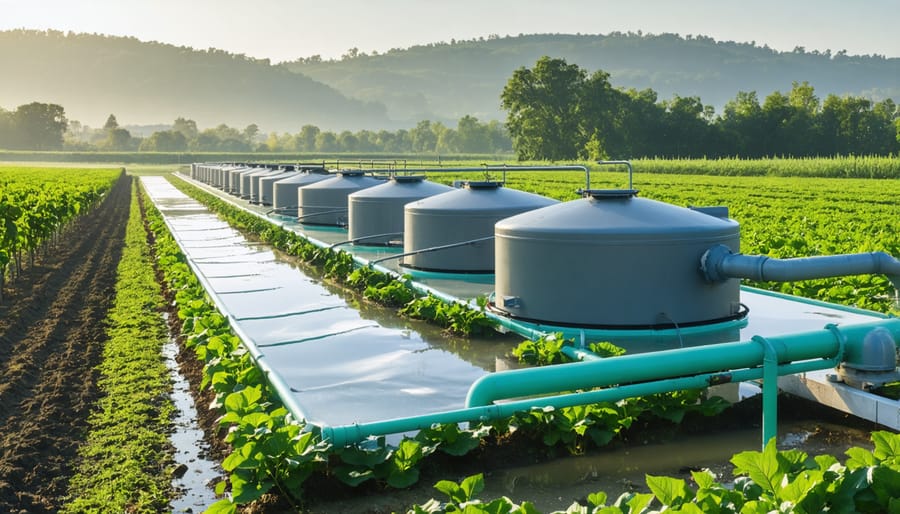
Practical Implementation Guide
Getting Started: Assessment and Planning
Before implementing sustainable water management practices on your farm, it’s essential to conduct a thorough assessment of your current water usage patterns and develop a comprehensive plan. Start by documenting your water consumption across different farming activities throughout the year, including irrigation, livestock needs, and processing operations.
Consider working with a local agricultural extension agent or water management specialist to conduct a professional water audit. They can help identify areas of inefficiency and suggest targeted water conservation strategies specific to your operation.
Create a detailed map of your property highlighting water sources, distribution systems, and usage points. This visual tool will help you identify potential improvements in your water infrastructure. Don’t forget to assess soil conditions across your fields, as soil health directly impacts water retention and usage efficiency.
Monitor weather patterns and historical precipitation data for your area to better understand your farm’s specific water needs. Many Alberta farmers find success using soil moisture sensors and weather monitoring equipment to gather precise data for informed decision-making.
Set realistic goals for water reduction and efficiency improvements, breaking them down into manageable phases. Remember to involve your farm team in the planning process – their practical experience and insights can be invaluable in developing effective solutions that work for your specific situation.
Cost-Effective Solutions for Different Farm Sizes
Every farm has unique water management needs, and finding cost-effective solutions doesn’t mean one-size-fits-all. For small farms under 100 hectares, simple systems like drip irrigation combined with soil moisture sensors can cost between $5,000 to $15,000, offering an excellent return on investment within 2-3 growing seasons through reduced water usage.
Medium-sized operations (100-400 hectares) might consider investing in precision irrigation systems, which typically range from $20,000 to $50,000. While the initial investment is higher, these systems can reduce water consumption by up to 30% and often pay for themselves within 4-5 years through improved yield and decreased input costs.
Large-scale farms over 400 hectares can benefit from comprehensive water management systems, including weather stations, soil monitoring networks, and automated irrigation controls. Though these systems can cost $75,000 or more, they typically generate savings of $100-150 per hectare annually through optimized water use and reduced labour costs.
Many Alberta farmers have found success with phased implementation, starting with basic solutions and gradually expanding as resources allow. Provincial grants and federal agricultural programs can offset initial costs by up to 50%. The Environmental Farm Plan program, for instance, helps farmers assess their water management needs and access funding for improvements.
Remember, the most cost-effective solution isn’t always the cheapest upfront – consider long-term savings and operational benefits when making your decision.
Monitoring and Maintaining Your Water System
Regular monitoring and maintenance of your water system is crucial for long-term sustainability and efficiency. Start by establishing a weekly inspection routine of all irrigation components, including pipes, sprinklers, and filtration systems. Keep detailed records of water usage, system performance, and maintenance activities using a digital or paper logbook.
For Alberta farmers, we recommend installing water meters at key points in your system to track consumption patterns. This data helps identify potential leaks and optimize water use during different growing seasons. Local farmer Tom Peterson from Lethbridge shares, “Since implementing flow meters, we’ve reduced our water consumption by 15% through early leak detection.”
Perform seasonal maintenance checks before spring startup and after fall shutdown. Clean filters monthly during peak season, and inspect for mineral buildup, particularly in hard water areas common across the prairies. Consider using pressure gauges to monitor system performance – significant pressure changes often indicate problems requiring attention.
Develop an emergency response plan for system failures. Keep essential spare parts on hand and maintain relationships with local irrigation specialists. Regular soil moisture monitoring using probes or sensors helps validate your system’s effectiveness and can prevent both under and over-watering.
Remember to calibrate all monitoring equipment annually and update your maintenance schedule based on system age and performance patterns. Many Alberta producers find success with cooperative maintenance programs, sharing expertise and resources within their farming communities.
As we’ve explored throughout this article, sustainable water management is not just an environmental imperative – it’s a practical approach that can benefit your farm’s productivity and bottom line. The success stories we’ve shared from fellow Alberta farmers demonstrate that these practices are both achievable and profitable in our unique climate conditions.
Remember that implementing sustainable water management doesn’t require an overnight transformation of your entire operation. Start with small, manageable changes like installing soil moisture sensors or improving your irrigation scheduling. Many farmers in our community have found success by beginning with a single field or crop type and gradually expanding their sustainable practices.
The key takeaways from our discussion include the importance of regular soil health monitoring, the value of efficient irrigation systems, and the benefits of water-conservation techniques like mulching and cover cropping. These practices not only help preserve our precious water resources but also build resilience against drought conditions and extreme weather events that we’re increasingly facing in Alberta.
Looking ahead, the future of sustainable agriculture in our region depends on our collective commitment to better water management. The support systems are in place – from government incentives to local agricultural extension services – to help you make this transition. Consider reaching out to your local farming community or agricultural advisors who can provide guidance specific to your situation.
By adopting these sustainable practices, you’re not just protecting your farm’s future; you’re contributing to the broader goal of maintaining Alberta’s agricultural heritage for generations to come. Remember, every drop counts, and every farmer who embraces sustainable water management helps create a more resilient agricultural community.
Take the first step today. Whether it’s attending a workshop, consulting with local experts, or implementing a small-scale water conservation project, your journey toward sustainable water management will help secure both your farm’s success and our region’s agricultural future.

